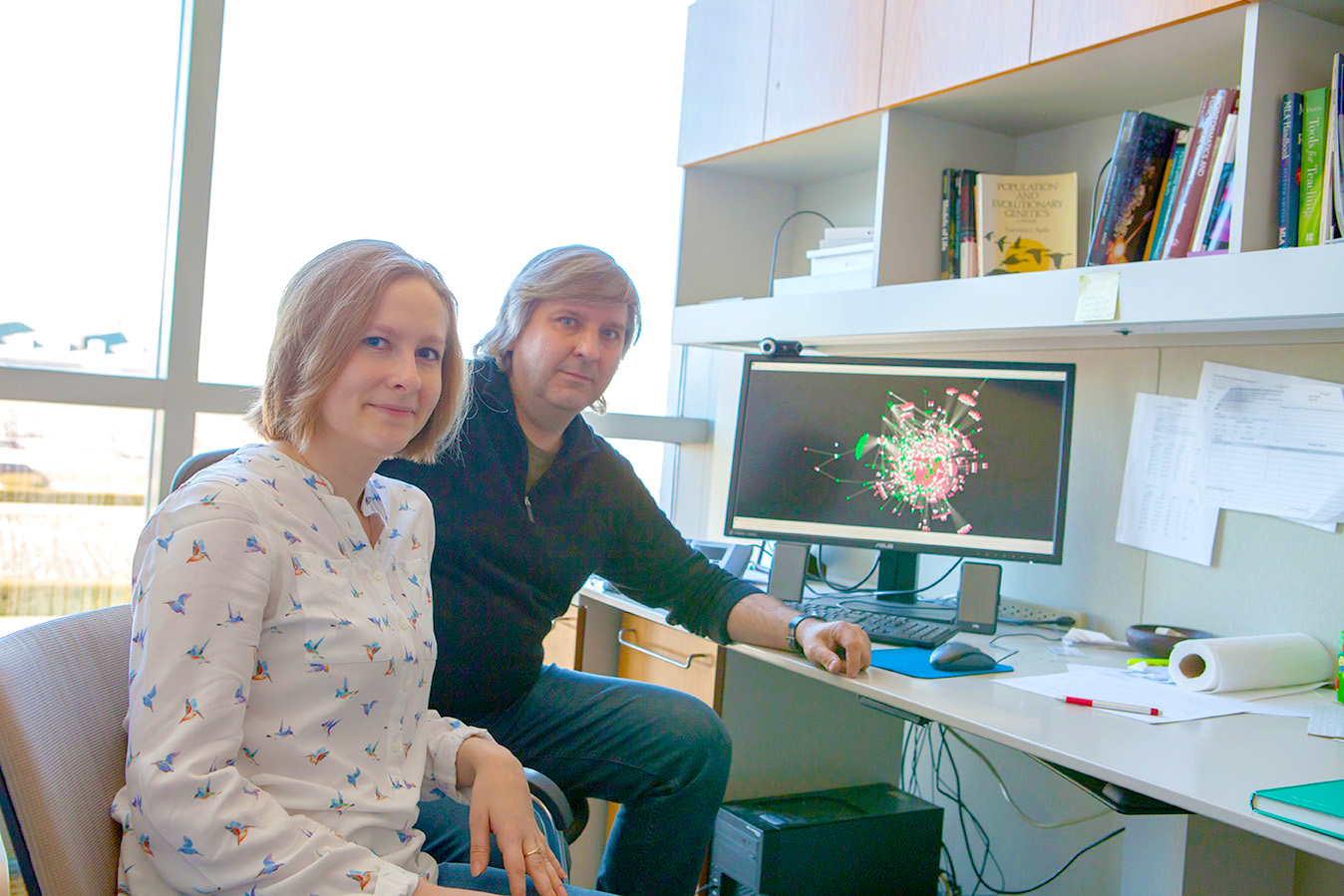Researchers use economic concept to understand microbial communities
A popular economic concept is helping IGB researchers understand how microbial communities operate.
Microbial communities are in our bodies, in the soil, in forests and oceans, and more. They’re made up of microorganisms that interact with each other in various ways, and these interactions can affect the surrounding environment.
Researchers like Sergei Maslov, a Bliss Faculty Scholar and professor of bioengineering in the Biocomplexity theme, want to understand microbial communities so they can learn how to manipulate them.

These communities are extremely complex, but they are typically stable. Maslov worked with PhD student Veronika Dubinkina and Akshit Goyal, a visiting scholar from the Simons Centre for the Study of Living Machines, to better understand how these stable states are formed, and to predict what would cause them to become unstable (
They created a conceptual model that uses a theoretical concept called the stable marriage problem, which was first proposed in the 1960s by two economists, David Gale and Lloyd Shapley, resulting in a 2012 Nobel Prize in economics.
The stable marriage problem explains how stable states are formed, and it applies to many real life situations. One example is how medical students are assigned to their first hospital appointments.
In this process, each student ranks the hospitals he or she prefers — a top choice, second choice, and so on. Similarly, hospitals review and rank which candidates they prefer. It’s likely that these rankings will conflict with each other — perhaps several students pick one hospital as their top choice, but the hospital can’t accept all of them. So there needs to be a solution — a way to assign all of the students to hospitals in a way that is stable.
“The idea is that you can find those stable states by following a procedure which looks somewhat reminiscent of the way actual marriages are formed,” Maslov said.
The solution to this problem, first proved by Gale and Shapley, involves a conceptual “game” with several rounds that starts with an equal number of men and women seeking to be married.
In the first round, each man proposes to a woman he most prefers to marry. If a woman in the group receives more than one proposal, she accepts the best proposal she’s received so far and rejects the others.
Meanwhile, the men continue going down their list of preferred spouses, and the women keep accepting or rejecting. Gale and Shapley proved that by the end of this procedure, every person will be married and every marriage will be stable — which means that no couple prefers someone else to their current spouses.
Maslov and Dubinkina said a similar process happens in microbial communities. Microbes are actively looking for nutrients, and they want to get the best nutrients they can find. Competition between microbes may get in the way of them getting the best nutrients possible, but eventually, the microbes will settle into a stable state.
Their study paves the way for predictive and quantitative models in an area of research that often focuses on identifying what microbial species are out there — and not on what they are doing together.
Dubinkina said she has worked with experimental data of microbial communities before, but her earlier work mainly focused on analyzing large volumes of data. This work takes it a step further by understanding the competition for nutrients taking place in microbial communities.
“In this project, we tried to think about how those microbes link to each other, how they’re interacting,” she said.
Maslov said descriptive science about microbial communities is common, but the challenge is using data to make predictive models that can help us scientists manipulate these communities to our advantage.
“Microbial communities greatly affect health and disease states in humans,” Maslov said. “We also need to manipulate them for agricultural purposes because they affect the quality of the soil.”
But the complexity of these communities — there are often hundreds of parameters — makes them difficult to model. Maslov said one of the advantages of their conceptual model is that it requires far fewer parameters.
“It’s a much simpler set of information about the system, which gives you predictive powers,” he said. “It tells you which species will survive, which nutrients they will use and how we can perturb the system . . . in such a way as to move it in the right direction.”
